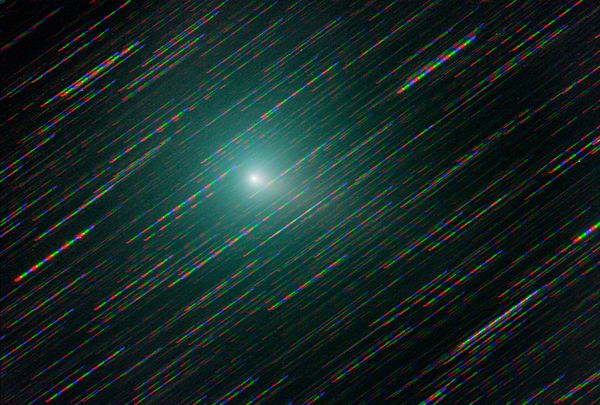Blurred stars seem to cut through the green halo of comet 103P/Hartley 2 in a five-minute-exposure photograph taken through a backyard telescope in the United States on Saturday. In recent weeks the comet has been drawing closer to Earth, and Hartley 2 will make its closest pass tomorrow, offering prime viewing via binoculars and telescopes. (See comet pictures.) Discovered in 1986 by Australian astronomer Malcolm Hartley, the mountain-size ball of ice and dust orbits the sun every 6.5 years. But comet Hartley 2 has remained shrouded in mystery, in part because gravitational interactions with Jupiter kept pushing the comet's path farther from Earth. That means Hartley 2 has been too faint to be seen using anything other than professional telescopes—until now. This week the comet should already be visible to the naked eye as a faint fuzzy patch in the late-night sky high above the northeast horizon. Hartley 2 will be passing the brilliant star Capella in the constellation Auriga, making the comet easier to track down. Dark skies away from cities will offer the best views, and binoculars or small telescopes will heighten the details. "I would recommend binoculars as the best way for the beginner to observe comet Hartley 2," Anthony Cook, an astronomer at the Griffith Observatory in California, recently told National Geographic News. "But through a telescope, the comet may fill the field of view, with more structure in the bright center, and a faint tail could become observable." —Andrew Fazekas Published October 19, 2010 Courtesy:National Geographic channelPictures: Green Comet Visible This Week
